
© Jakub Wittchen. (Click image for larger version)
Polish Dance Platform
Lublin 2014
www.polskaplatformatanca.pl
Picture gallery on Facebook
180 delegates, 13 performances and 12 artist pitching sessions over two days: The Polish Dance Platform 2014 is not for those with dainty cultural appetites. Producers, curators, journalists and ministerial delegates are all here to behold and engage in a showcase that gets to the heart of the country’s thriving contemporary dance scene, and interrogates what might constitute specifically Polish dance. All this takes place in the southern city of Lublin and is handily spread between the grand whitewashed former monastery, Centrum Kultury, and the modern Maria Curie Skłodowska University’s arts building nearby.
The first evening’s programme is partially scuppered at DanceTabs’ end by some rather hefty traffic jams on the way from Warsaw. But catching the last show of the evening – Lublin Dance Theatre’s All stories which we have not told before – a playful, dynamic and above all conceptual tone is set, which continues to weave in and out of the rest of the platform, binding into it a sense of the underlying mood of current Polish dance.
LDT’s four-hander sees each performer attempt to hold court at one of the microphones lining the stage-front, at first being diverted and swept away by one of the others who in turn tries to have their say. When each does finally get the chance to speak, their introductions are followed by dance solos, quirkily sassing up various parts of each dancer’s personality. Several false climaxes leaves All stories… feeling as if an edit might be of benefit, but the final water balloon orgy is as colourful a start as you could ask for in any festival line-up.
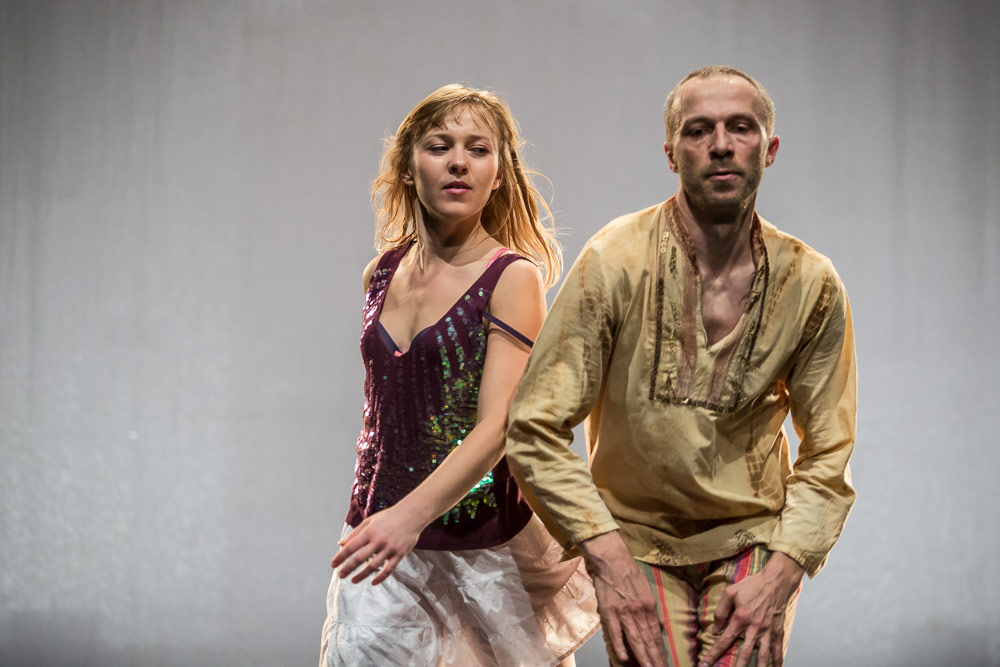
© Jakub Wittchen. (Click image for larger version)
One of the more interesting features of the platform is its Artist at a Glance presentations: tiny 15-minute pitching slots given to dancers chosen by individual members of the Artistic Commission. Hearing the dancers talk not only about individual works but their overall creative progression unlocks some of the beguiling mysteries that give contemporary dance its impenetrable reputation. Magdalena Jędra, for example, tells us she freely expects many interpretations of her piece Le Pas Jacques, before showing us a videotaped discussion based on her deconstructed version of Swan Lake. But the most striking feature of these mini-showcases is their diversity. The macho glamour, technical wizardry and bold strokes of Daniel Stryjecki are offset by contemplative Jędra, or her long-term collaborator Anna Steller, whose dangerous emotive solos seem to buzz with energy even when viewed in video clips. Steller’s ode to the 9,000 lives lost when ship Wilhelm Gustloff sank in the Baltic is an extraordinary mishmash of horror, sensuality and confusing beauty that fulfils exactly the aims of the presentations: it makes you desperate to see the full piece live.
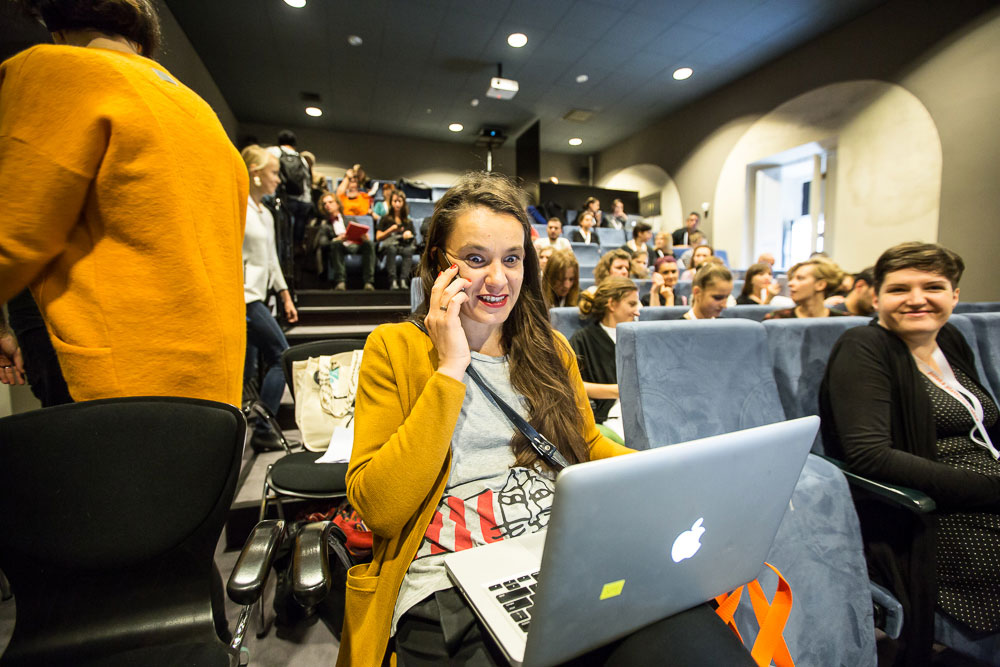
© Jakub Wittchen. (Click image for larger version)
In the second day’s presentations, concept-led dance-theatre continues (perhaps with the exception of DanceLab’s sleek Gaga-trained duets). Iza Szostak’s intrepid anthropologic pieces – one a meditation on the absurdity of predicting the future of Europe, another a beautiful contemplative piece based on research into an instrument maker’s craft – look fascinating, as do Teatr Amareya’s stuffing of corsets with meat in fetish.wtf, and exploring ideas of exile in Nomadic woman.
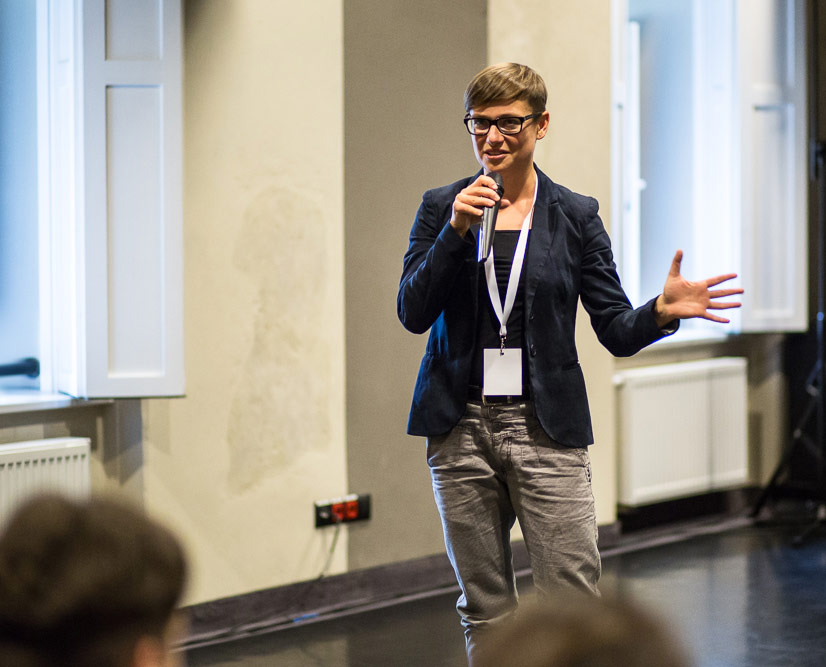
© Jakub Wittchen. (Click image for larger version)
It’s noted in Saturday afternoon’s panel discussion on the role of dance platforms that much of the contemporary dance being created is in small ensemble, duet or solo form (Joanna Leśnierowska from Art Stations Foundation asserts that this is not just a result of limited funding but also of culture, Poland being famous as far back as the 1930s for its small-scale dance). Certainly the Saturday night programme includes four solos which demonstrate both the scope and also the limitations of the form.
Hygin Delimat’s For Living In starts off with the bizarre and delightful concept of dancing architecture. ‘1973 Bratslav Manhattan settlement’ he says, making rigid angles and fast layers; ‘1964 Katowice central station’, scooping back-bent arches. As the choreography becomes more complex the concept does seem to become more muddled, but his street-influenced style, and dynamics of pace – turning slo-mo mid-move – are gripping and tightly danced.
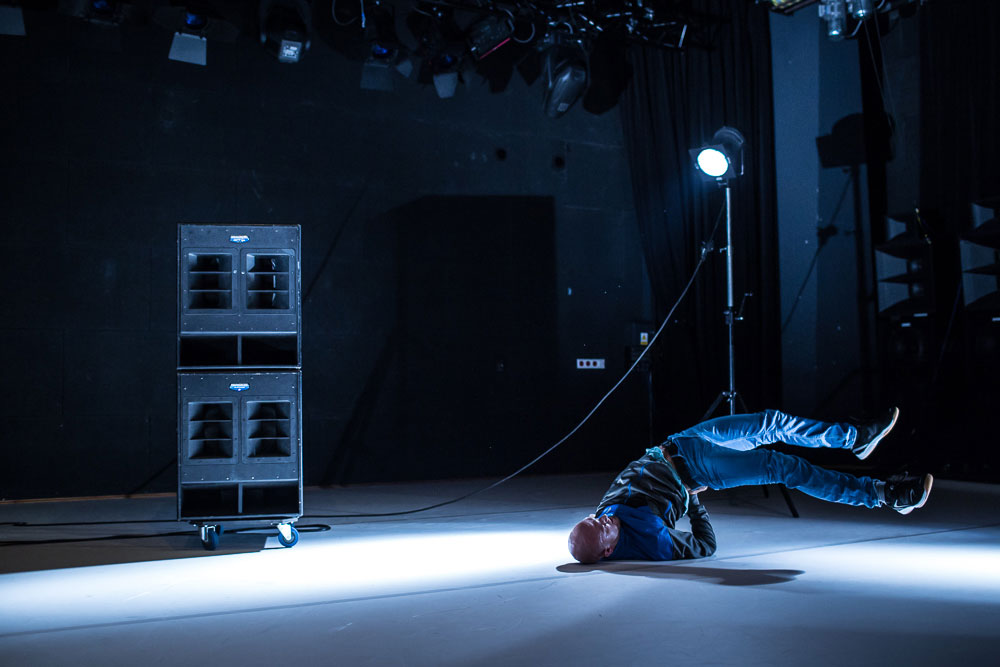
© Jakub Wittchen. (Click image for larger version)
Following the thread of puzzlement further is Israeli dancer/choreographer Irad Mazliah’s collaboration with Polish director Zbigniew Szumski, The Failure of a Future. Opening to Mozart’s Requiem, Mazliah crafts a concentrated portrait of disturbance, dragging his thumbs across his mouth or licking his arms. Stylised posturing takes over in a segment using text from a 1927 speech on Bauhaus, a story is told of a young boy receiving gifts of oranges from his mother’s lovers, and Mazliah takes the role of a bed, chased by digital projections round its constructed room. Deliberately – almost aggressively – baffling, the intriguing chaos outstays its welcome towards the end, with concept far overtaking choreography.
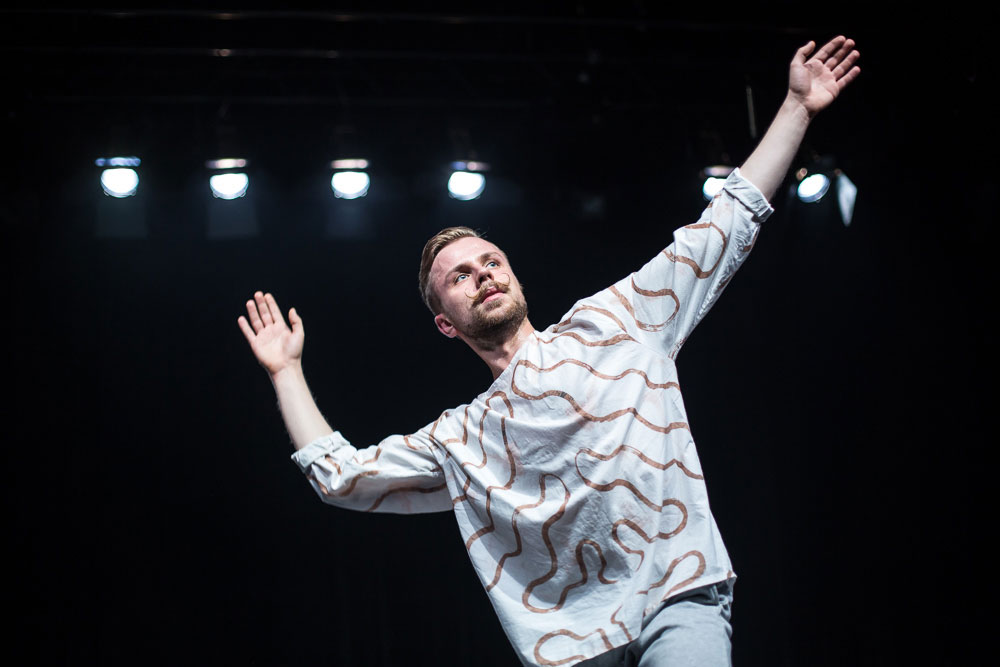
© Jakub Wittchen. (Click image for larger version)
Paweł Sakowicz’s Bernhard falls to a similar fate. His exploration of the work of Austrian writer Thomas Bernhard follows an emerging trend of dance using text for purposes other than narrative – Christopher Bruce’s Ten Poems and Lightfoot León’s Shutters Shut being brilliant examples. He shapes wiggles round the space with his foot, generates repeated patterns of cadence and punctuation, but unlike Bruce or Lightfoot León, Sakowicz doesn’t root his movement in the source text, instead giving us only quips and fragments. The result is that there is nothing to contextualise his dance-phrasing; ‘My attitude,’ he says at the start, ‘to Thomas Bernhard is not quite obvious.’ He’s not kidding.

© Jakub Wittchen. (Click image for larger version)
But it’s Aurora Lubos who creates the first piece of the platform that puts urgency before self-expression. ACTS (AKTY), her examination of domestic violence based on survivor research, is volatile with echoes of rage, self-loathing and paralysis. Although as a piece of theatre it feels more fractured than focussed, the ideas she uses to build her metaphors and force us into empathy are fresh and blunt. Starting out, stitch papers glued to her eyelids with tears of blood – a grotesque pair of false lashes – she projects a dignified glamour offset by the broken spirit of her measured, dejected walk.
ACTS/ AKTY – trailer from aurora lubos on Vimeo.
Images of domestic fun turned savage recur in videos of Lubos repeatedly knocked out of breath by an innocuous red beach ball, and a vodka-soaked folk song that sours as each verse grows more desperate. But her pain reaches unbearable levels when she dishes out plates of meringue with strawberries and cream to the audience, typical sweets of a Polish party. The first taste of the sugar and it’s impossible not to feel sickly guilt creep in after all we’ve seen. Coupled with watching Lubos eat hers while rapt by a video of a child lying inside a crate, the juxtaposition is horrifying. It brings home both the notion of a child being placated with sweets, and a mother who has to continue domestic duties despite being shredded inside. Crucially we never see the perpetrator; he or she doesn’t matter. Our focus, as is Lubos’s, should be on the victim.

© Jakub Wittchen. (Click image for larger version)
From here on the programme just keeps getting better, kicking off on the final evening with Tomasz Wygoda’s majestic journey into the mind of Vaslav Nijinsky. In an exploration of the lost choreography of Rite of Spring, Wygoda in the first act is clad in a contemporary black suit, restricting his movement and zooming the focus onto the fine intense details of his hands. A loose deconstructed quality to the dance sees his bendy back and limbs tumbling around the stage like a blown leaf, or spellbound in open-armed ecstasy. Everyday gesture is transformed by the music: when he opens the lapels of his jacket to a trumpet’s climax, it’s a moment of grand revelation.
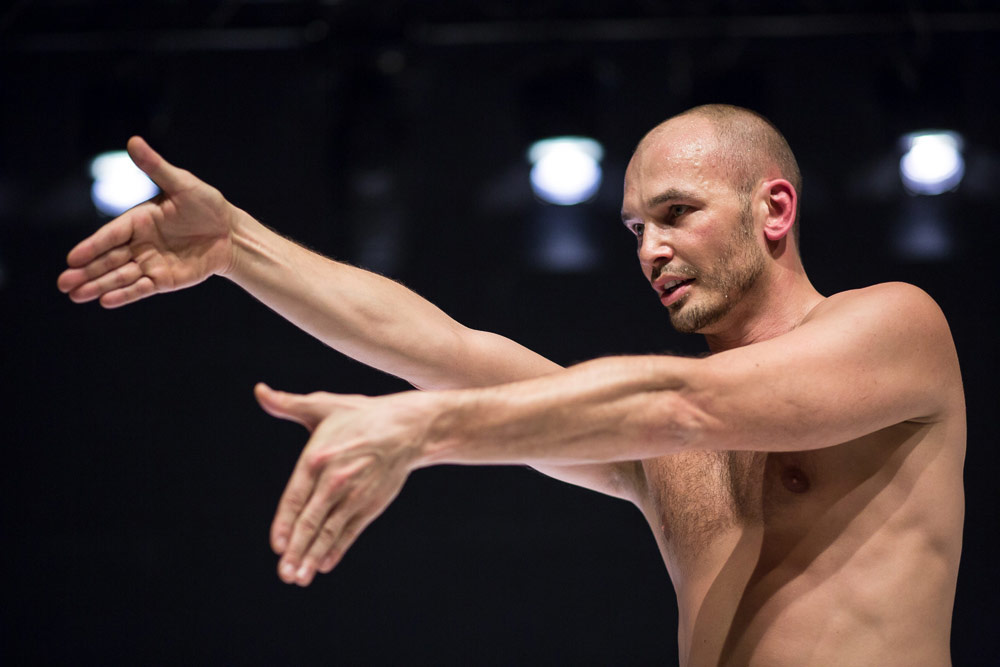
© Jakub Wittchen. (Click image for larger version)
Later, stripped to underwear and black socks, his body takes on classical poise, shifting between tableaux: seated, a leg angled coyly across the other; standing, shoulders pushed back with the assurance of beautiful youth. Instantly, the freedom of discarding his clothes gives balletic line to his body. It also throws into sharp relief his vulnerability, and as the performance comes crumbling to a paranoid denoument, it becomes a melding of both the original story – a young woman given up for sacrifice – and the tragic real life of its choreographer, beset towards the end by mental breakdown.

© Jakub Wittchen. (Click image for larger version)
Vulnerability continues in Pink Mama Theatre‘s Freaks. Justifiably the text of the piece is performed in Polish, but even with Polish Cultural Institute’s Anna Gruszka’s post-show translations, it relies too heavily on words to make full sense without speaking the language. Despite this, Freaks is visually arresting: four men in acid-toned tutus are presided over by a Promethean dictator, who uses cruelty to help them fulfil their dreams of transformation. In wry but heartbreakingly sincere pokes at beauty’s artifice and cultural construction they wriggle upside down in their tutus, replace pliés with wide-legged moves. It becomes vicious when rubber bands are strapped to faces and wigs torn off, all leading to a climax that magically blends commentary on the pain of fashion with references to Swan Lake and the ugly duckling. This, combined with an Almodovarian palette and soundtrack, ends up leaving me eager to see it again in full translation.

© Jakub Wittchen. (Click image for larger version)
Andrzej Adamczak’s pacey Need Me is full of athletic glamour, tackling power struggles between self and ego. Photo-shoot lit with on-stage spots, and a magazine-spread feel, Adamczak and Katarzyna Rzetelska tumble and tangle, pushing each other out of the spotlight, yanking hair and limbs. It’s brassy but the whipcrack pace makes it one of the few pieces in the platform you could confidently predict appealing to a mainstream crowd.
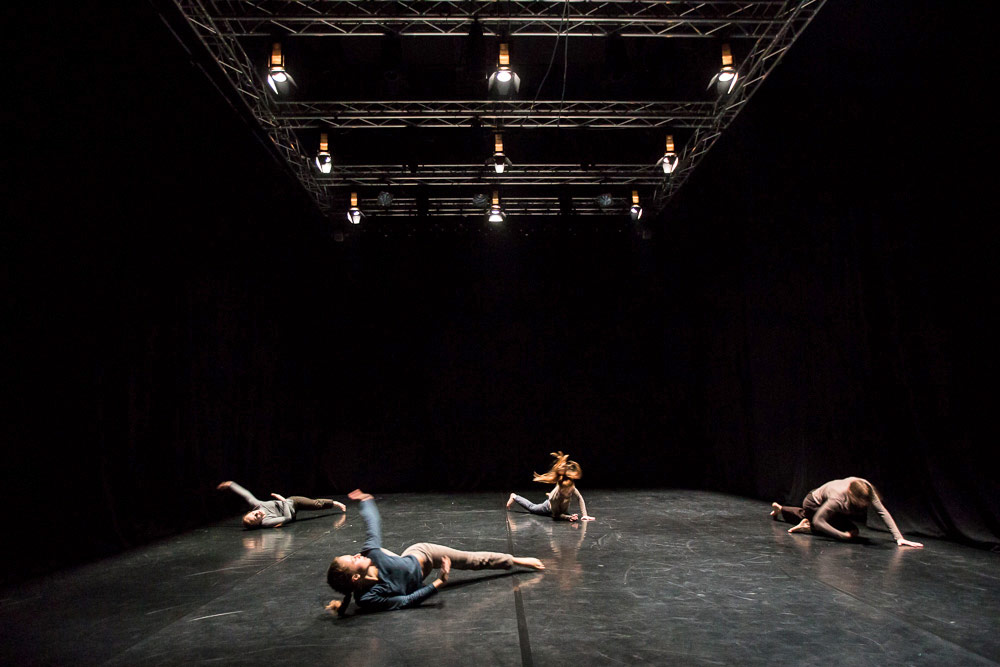
© Jakub Wittchen. (Click image for larger version)
But it’s the platform finale, Maciej Kuźmiński’s Room 40, that bridges beauty and concept perfectly, deservedly scooping the audience prize in the awards ceremony after. It’s a brave stroke for a choreographer to start the first movement of his piece with four static dancers. Except that here they’re not quite stock still, being braced instead into uncomfortable plank positions that force them to tremble with exertion. You can almost feel their pain, and in the silence that comes between songs (the score is Richard Strauss’s ‘4 Last Songs’), can actually hear their straining whimpers. When they finally all fall into movement in exquisite unison, the catharsis, the plunging of the tension, is wonderful. Lolling, looping patterns emerge through their floorwork, an ecstasy after staying braced for so long.
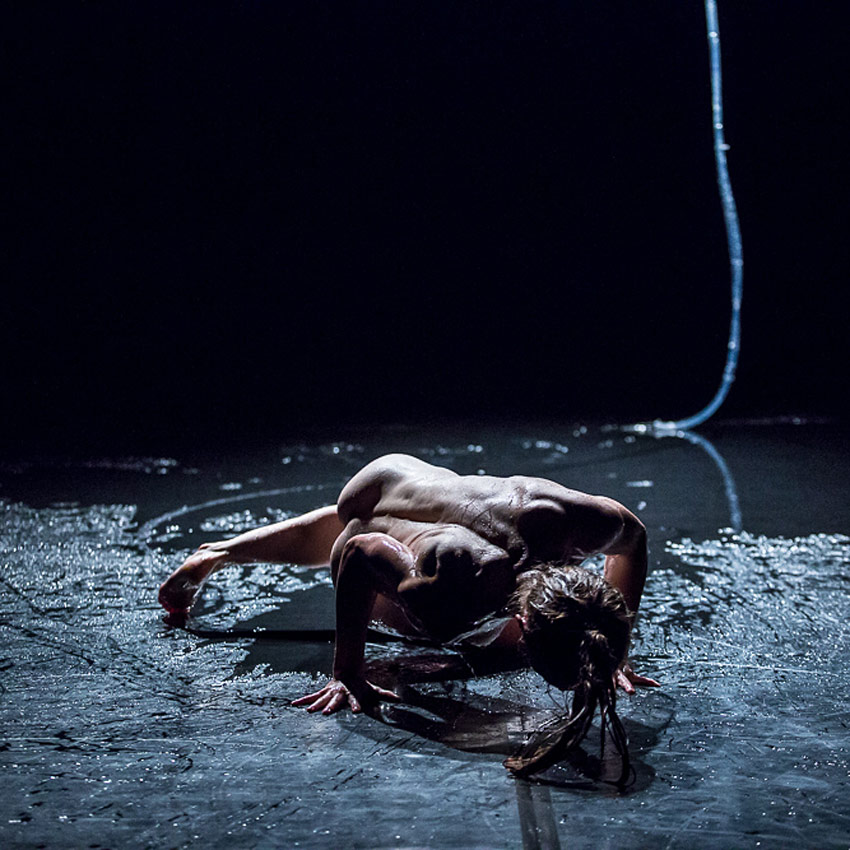
© Jakub Wittchen. (Click image for larger version)
In the second half, Daniela Komędera solos naked beneath a giant tube of bubbling water pouring onto the stage, an IV drip fuelling her amniotic thrashing across the slicked space. Sensually lit, it’s a vision of physicality – Komędera’s wriggling, body-flipping connection to the ground – and ethereality, as the soprano’s rising and falling emotion mirrors her own pain.
Kuźmiński cruelly leaves her returned to that brace-plank position until the last person has filed out of the auditorium. And whether intentional or not, the effect is to give us something that feels like it’s not quite over, like it’s still braced for more. Which makes a fitting end to a celebration of a country’s ongoing creation of dance.









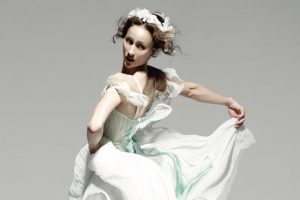

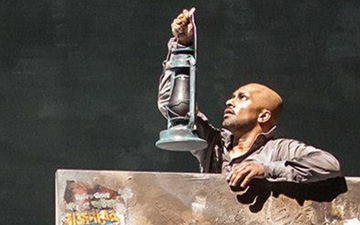
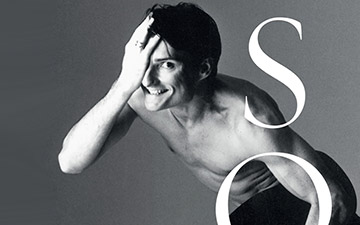
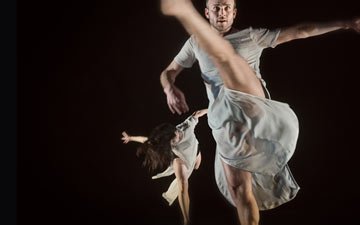
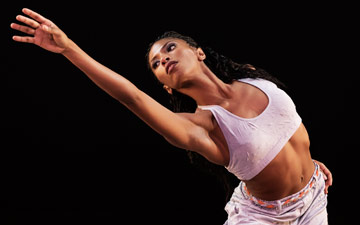
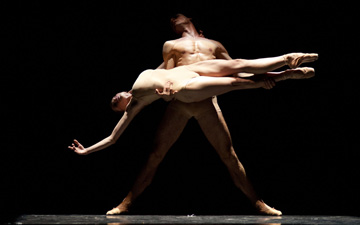


You must be logged in to post a comment.